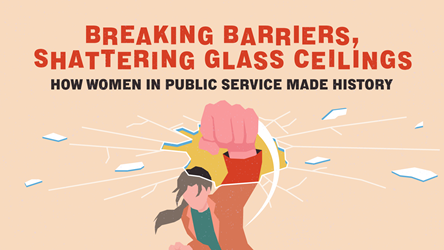Clean Tech Finds Singapore a Conducive Laboratory
With its eye-catching light and dark green perforated facade, the CleanTech One building, located next to the Nanyang Technological University (NTU), is an edifice that is hard to miss.

Equally striking are the building’s other green elements: the twin-towered building bookends a landscaped garden that is shaded by a sky trellis helping to lower the ambient temperature; up on the roof, neatly lined solar panels soak up the sun’s rays to help power the lighting in the building.
Befittingly, the $90 million complex houses a mix of companies and research institutions that are developing clean technology, or cleantech. They include Danish firm DHI Water & Environment, energy solutions company Diamond Energy, Chinese solar company Yingli, Japanese water membrane firm Toray, the Nanyang Environment & Water Research Institute (NEWRI) and the Energy Research Institute@NTU (ERI@N).
It is the first development to be completed in CleanTech Park, Singapore’s first eco-business park. To be fully running by 2030, the 50-hectare park is part of a master plan to advance Singapore to become a cleantech and sustainable development leader in the world.
JTC Corporation (JTC) and the Economic Development Board (EDB) are leading the park’s growth.
In 2011, CleanTech One won the BCA Green Mark Platinum Award for New Non-Residential Buildings. CleanTech Park was also the first to clinch the BCA Platinum Green Mark for Districts Award in 2012. But the real measure of the park’s success will lie in the growth of Singapore’s clean technology industry itself, says Mr Leow Thiam Seng, JTC’s director for aerospace, marine and cleantech cluster.
“We also hope that new technologies tested in the Park could be successfully deployed into our other industrial estates and other parts of Singapore,” he adds
.Why cleantech?

As early as 2007, EDB had identified the clean technology industry as an area of strategic economic growth for Singapore, which is already a regional centre for financial services, petrochemicals, semiconductors, biomedical sciences, shipping and aviation.
EDB aims to grow the cleantech sector to contribute $3.4 billion to Singapore’s gross domestic product (GDP) and provide 18,000 jobs by 2015.

The global cleantech market was estimated to be worth US$1 trillion in 2010. This is projected to double by 2020.
Mr Goh Chee Kiong, EDB’s director for cleantech, says the emergence of “mega trends”, like climate changes and the depletion of natural resources and fossil fuels, has added much momentum to the clean technology sector.
Singapore, despite its limited resources, has in fact built up considerable cleantech capabilities over the years.
“Singapore focused on sustainability long before it became a buzzword,” Mr Goh says. “Since the 1960s, the country has had to address resource constraints, optimise land use, and develop new solutions related to urbanisation.”
So far, the concerted effort to grow the industry is already reaping results.
Take the water sector, a key part of the clean technology industry. There are now about 100 water companies based here, from 50 in 2006. Public and private research and development centres have also grown from three to 25.
Multi-agency effort
Growing the clean technology industry undoubtedly requires a “whole-of-government effort”, says Mr Goh.
Already, inter-agency workgroups such as the Energy Innovation Programme Office (EIPO) and the Environment & Water Industry Programme Office (EWI) have been set up to drive and facilitate research and innovation in energy efficiency, environment and water technologies respectively.
Another of EDB’s key strategies is to position Singapore as a conducive living laboratory where companies – in partnership with government agencies – can develop and test green solutions in real-life settings. This sometimes means inviting companies to use an agency’s facilities as test beds.

“Naturally, there was some initial hesitation. For some agencies, to open up and allow the use of their premises as test beds, it requires a change from what they are used to,” says Mr Goh. “But most quickly come to the perspective that it’s going to be a win-win situation for everybody, and Singapore as a whole will benefit from this effort.”
A case in point is PUB, Singapore’s national water agency. Its openness and willingness to try new solutions at its water plants has been a huge pull factor for global cleantech companies and research institutes, says Mr Goh.
“Water utilities around the world tend to be very conservative but PUB is very different. By allowing itself to be a reference customer and a partner in the technology development process, many companies have gravitated to Singapore to do research work,” he adds.
Test bed for ideas
Similarly, the concept of a living laboratory is being realised at CleanTech One. Under an initiative called the CleanTech Park Living Lab Programme, JTC is partnering industry players to test innovative but yet-to-be-commercialised green urban solutions.
Among the trials being carried out is a charging station for electric vehicles that is controlled by demand response technology, which essentially allows users to reduce or shift their power use during peak demand periods.
Mr Dallon Kay, president and group chief executive officer of Diamond Energy, which is behind the trial, says JTC’s openness to experimental research work was one of the main reasons that attracted his company to set up office at CleanTech One.
“Most building owners will not be so bold to allow tenants to look at these new technologies because they are very new to Singapore,” he says.
The idea of bringing the industry under one roof to foster innovation is also promising. Associate Professor Tan Soon Keat, deputy executive director of NEWRI, another key tenant, says: “CleanTech One is about creating opportunity. We do not know whom we may run into in the elevator. It could be someone with the solution to a problem that we have had for some time.”
Despite the current economic gloom, which has resulted in some countries pulling back their support for clean technology, Mr Goh is confident that the global clean technology market will continue to power forward over the long term. Singapore is committed to developing the industry as a new growth engine and will continue to provide companies with easy access to technology, markets, capital and talent, he adds.
“We strongly believe Singapore’s competitive advantage – the partnership of the various agencies and our pro-business attitude – will set us apart from the competition,” he says.
Other Test Beds at CleanTech One
Real Time Engineering, a system integrator, is testing a 1-megawatt hydrogen fuel cell system that is expected to supply clean energy for more than 20% of the building’s common areas.
NTU’s ERI@N and Royal Philips Electronics are testing a low voltage direct current (LVDC) grid network that automatically controls individual LED panels on the ceilings with potential energy savings of up to 45%.
Solar photovoltaic panels to supplement the building’s electricity needs have been set up jointly with German solar firm Phoenix Solar.
JTC has partnered building consultant Surbana to build a sky trellis in the building to test if the shade provided can reduce ambient temperature and save on the consumption of the building’s air-conditioning.
- POSTED ON
Jan 16, 2013
- TEXT BY
Jamie Ee









